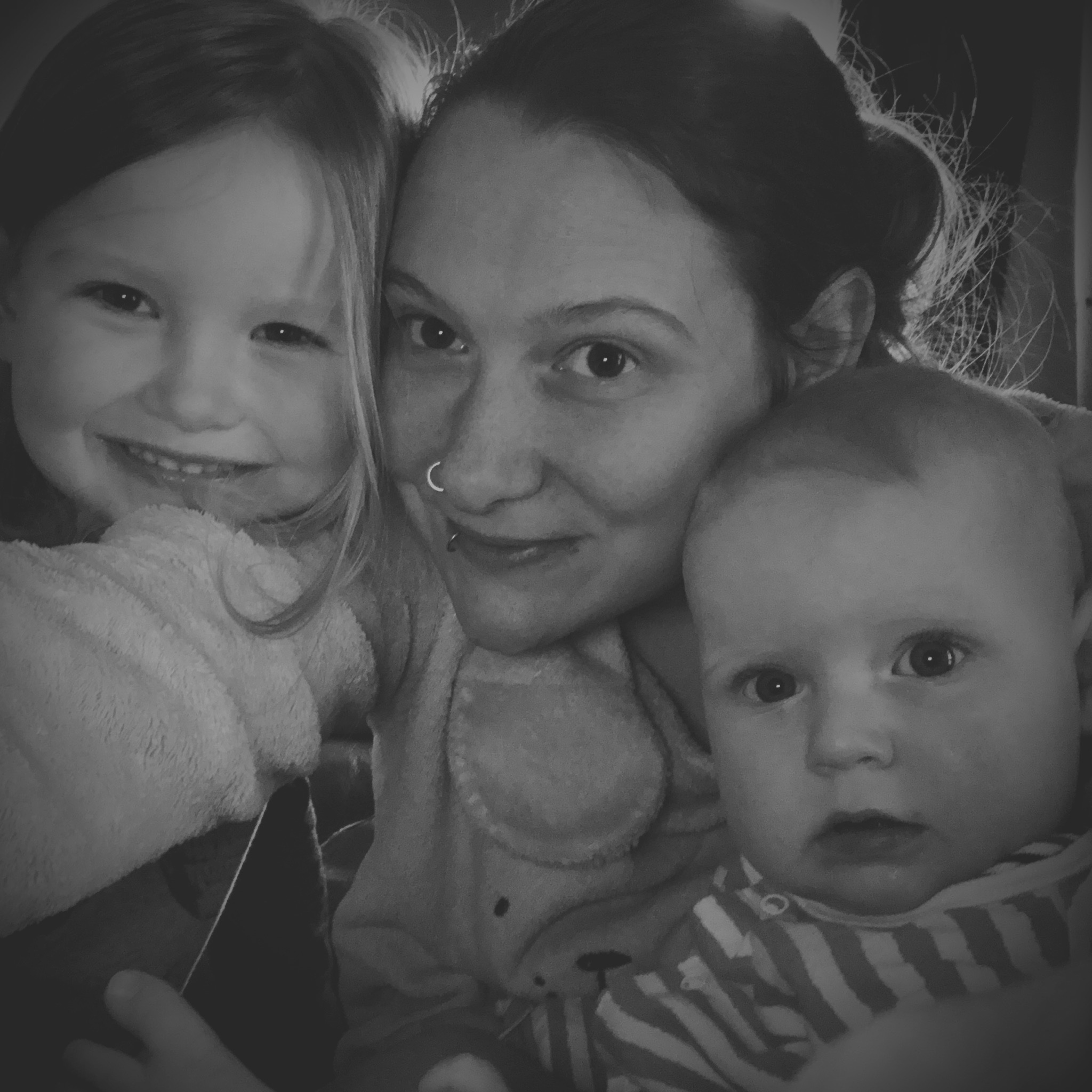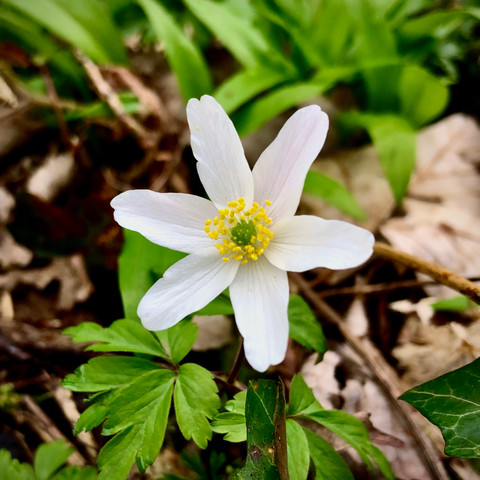March in Castlemilk Park, 2021
- Emma Taylor

- Apr 1, 2021
- 3 min read
Updated: Apr 25, 2021
The end of March brought the mild smell of wild garlic to Castlemilk park, waves of daffodils, carpets of Golden Saxifrage & the buzz of bumblebees.
From left to right: Golden Saxifrage, Daffodils, Lesser Celandine
I can see frogspawn in the mini pools at the side of the burn, and the first eye I saw was the watchful one of a male blackbird, peeking out from the boundaries.

Throughout the park, tree buds are opening, making distant trees look like a painting; one in which the artist has flicked paint from a toothbrush to create a faint speckle of reds & greens.


The last of Snowdrops gave way to the Wood anemone (pictured below).
Finding this plant is an indication that the area it inhabits is ancient woodland. It takes 100 years to spread just 6 feet! I love the reminder every springtime how rare some parts of Castlemilk park are.
Another indication of ancient woodland that inhabits the park is the easily overlooked Dog's mercury; a highly toxic & foul-smelling species.

It can be a bit of a pest, taking hold of the woodland floor and shading out other species, yet, it is valuable to many insects.
This week I downloaded Plantlife's Great British Wildflower Hunt Survey. I was pleased to tick off Lesser Celandine & Primrose, along with the Ramsons and Wood Anemone. Next month, I am looking forward to ticking off more.
The flowers were not the only splash of colour. While noticing some recent badger activity, a pink slime mould caught my eye. I found this out to be Stemonitis Fusca.

I have to admit that it grossed me out at first. It really is one of the strangest species I have seen so far. If you are like me, intrigued by the unusual and like a good timelapse video, check out how it develops here - it is out of this world! I didn’t think I’d ever be able to say I have a favourite smile mould, but I do now.
For me, the most noticeable thing in recent days is the patches of silvery grey specks over the deadwood throughout the woods.

Not sure if it was young or old fungi, I found out it happens to be young Brittle Cinder Fungi before it goes black & brittle with age.
Sitting beside the pond is something I always do. Being central, it makes a good resting point between the walks.

The middle island has recently been thinned out & will be cleared of invasive species to make it safer & enhance biodiversity.
Flashes of orange caught my attention, as robins dipped in and out of the pondside, whilst the blue & long-tailed tits flitted from branch to branch.
I was also mesmerised by two squirrels dancing and tumbling up and along with the trees together. It’s not often you see two squirrels not bickering. They eventually ended their mating ritual, and they appeared to even have a cuddle.
I am looking forward to seeing how this area develops over time with the fabulous work the Castlemilk Park team are doing here.
March ended by spotting the Roe deer in the park for the first time, and being so close was a treat.
Living up to their elusive reputation, no way were they staying still & in plain sight for a decent photo, but I was thrilled to have seen them.
April is now the beginning of butterfly recording again. I am excited to get out again and hoping there will be a few butterfly photos to share at the end of the month. I will be out recording weekly, and Jared has his own adopted woodland patch now to tend.
There will be lots to share!
Sometimes, I am lucky to get a special photo when walking through the park; this month I will leave you with this Corvid taking off.

Thank you for reading and have a lovely Easter weekend! Please subscribe for monthly wildlife from Glasgow’s wee woodland.



























Well someone has been very busy lots of brilliant photographs the scenic views, the very odd fungi I have never seen before, A surprise to see the deer and to cap it off a magazine cover photograph of a crow the detail in your photographs are excellent and the fact you have researched and given names and facts about the wonderful nature you have seen is really helpful and educational for children and adults. Thank you for your efforts and sharing these images and details with us. Unfortunately lots of people can’t get to the parks so you’re doing a great service for them and showing Glasgow parks at their best 👍
Excellent as usual Emma, wildlife in spring is amazing to watch and you seem to have captured the real essence of the park.